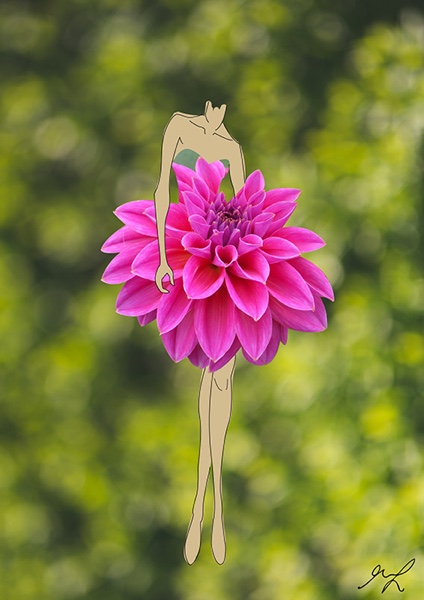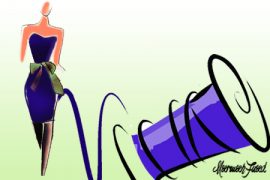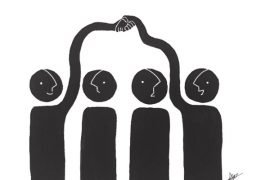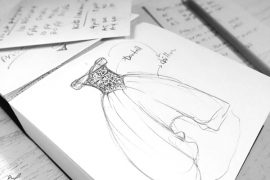The rise of digital influencers in fashion, and how they grew to take this big role they currently uphold.

It was on Susie Lau’s blog “Style Bubble” that I had my first view of a fashion blogger who frequently posted what she wore (she took pictures of herself using a professional camera facing a mirror), wrote notes on designer collections and whatever else was occurring in the industry itself. A fascinating thing it was, to solely check what one person thought of a garment or a new designer who just launched his/her collection. Later on, I began following other personal-style blogs such as Man Repeller and The Blonde Salad.
Before discovering the vast world of fashion blogging, it was the newest issue of Vogue that I anxiously had to pick up from a bookstore or a newsstand to know what was happening in the industry, and to view editorials that were far too out of my reach yet still inspiring. However, since discovering the world of fashion blogging, my attention began to steer away from the magazines that I used to read and onto fashion blogs. What was it about fashion bloggers that made people (myself included) utterly fixated on them?
Visual.ly (2011) reports that fashion blogging has increased in several countries around the world, analyzing 550+ fashion blogs in 31 different countries. For example, in North America, the total number of fashion blogs today rounds up to 921,000 blogs, of which 38% is editorial content, 33% is personal style, 21% is DIY (Do It Yourself), and the remaining 7% is street style. The figures seem to be increasing every year, with new fashion bloggers aiming for the ranks. Bloggers have increasing influence over the industry, more than fashion magazines, due to the hundreds of hits on their websites and the thousands of followers on social media.
There are several ways in which bloggers have dominated the fashion industry. First of all is their influence, which is currently widespread. Melanie Doncus of The Feed claims that Katherine Finney (The Budget Fashionista) was one of the first fashion bloggers to be invited to New York Fashion Week. “Not only are the fashion bloggers filling the front row at fashion week, but they’re also gracing the covers of popular magazines, becoming the faces of global brands, starring in ad campaigns and scoring publishing deals,” says Doncus. The better their style, the more followers they gain. For example, Leandra Medine of The Man Repeller posted her outfit later in 2013 declaring that this would be the “next trend”, wearing a midi skirt over jeans. Eventually, fashion-insiders such as Yasmin Sewell began adopting the sensational trend that Medine had founded.
Fashion bloggers developed so briskly that they have attracted more than just readers. A few years ago designer advertisements were spotted mostly in fashion magazines, but now fashion bloggers have more requests for advertising than magazines do. Advertisements on blogs became a free source of publicity – instead of having to pay thousands for a one-page advertisement in a magazine, brands could pay bloggers the same price and get more publicity than magazines could provide. Whether it was an up and coming designer looking to get exposed or an old fashion house wanting to renew its image, fashion bloggers were what they opted for when it came to ads. It was also a way for bloggers to “monetize” their blogs. Steven Kurutz of the NY Times states in his article Fashion Bloggers, Posted and Represented that fashion bloggers can now make four-figure sums from collaborating or dealing with brands.
Another reason why fashion bloggers are essential to the industry is due to the fact that they are quicker in reporting information occurring in the fashion industry than fashion magazines. The first mention of news is spread by the bloggers through their social media accounts like Twitter and Facebook. Meanwhile, the magazines have to write about it in the next issue, which might be published after a certain amount of time. For example, when designer Nicolas Ghesquiere left his 15-year old position at Balenciaga as the Creative Designer, all the top fashion bloggers immediately announced the news on their Instagram and Twitter accounts before everyone else. They were also the first to reveal his new job as the Creative Designer of Louis Vuitton. The sooner they uncover significant events that happen in the industry that not everyone has access to, the more their status and popularity increases.
One of the main reasons they’re significant is that fashion bloggers are considered to be “real people”, hence, it is easier for their audience to relate to them than relating to a model in a photoshoot. Photo-shoots are less realistic and feature expensive clothes, so readers are less interested in them. However, a blogger can mix and match high-street brands with low-priced pieces making it look more applicable to their audience.
In conclusion, fashion bloggers are now viewed as important as editors in the fashion industry, since they are significant in terms of influence, effectiveness and rapidity. Although they have been known to be impactful in the industry, several famous figures have come to label them as conceited and unknowledgeable. In my opinion, fashion bloggers have a large following because of what they’ve accomplished and how far they’ve come in a short time span.
Reference:




I am proud to be a fashion blogger.